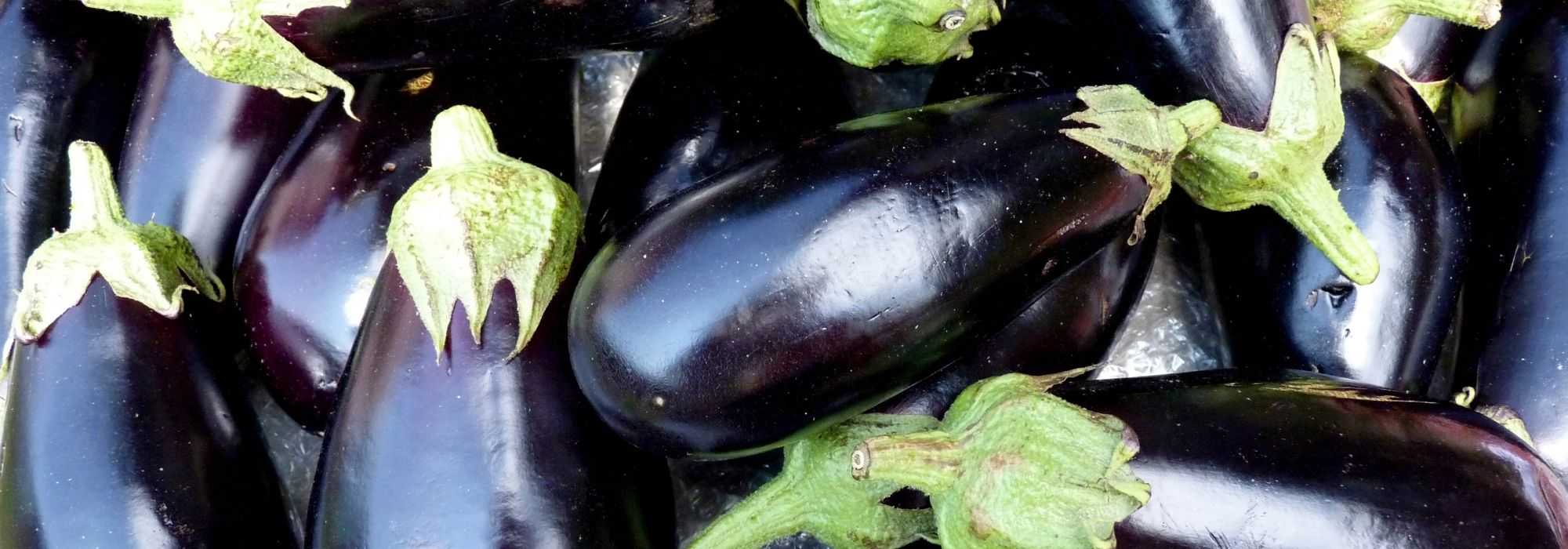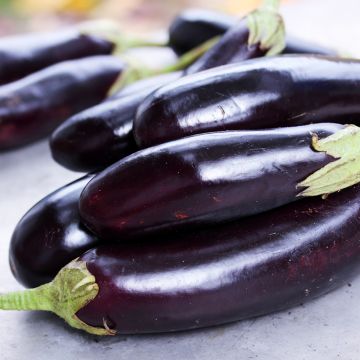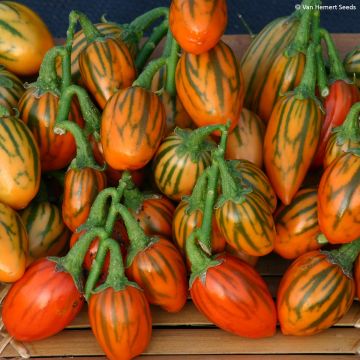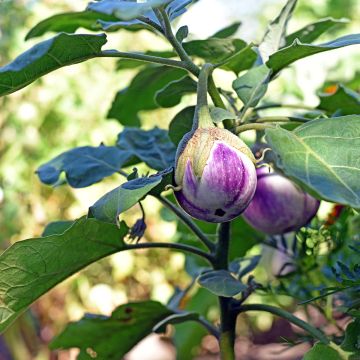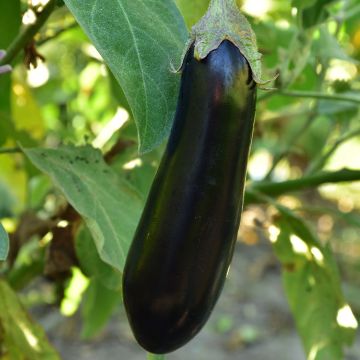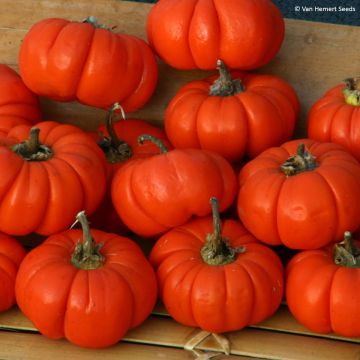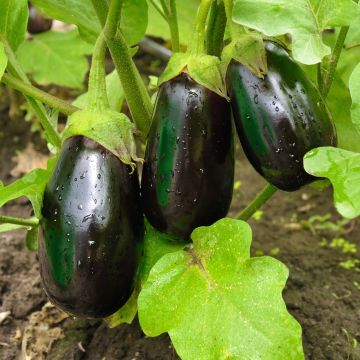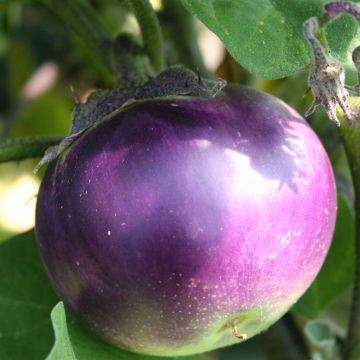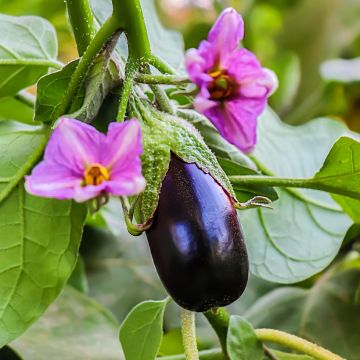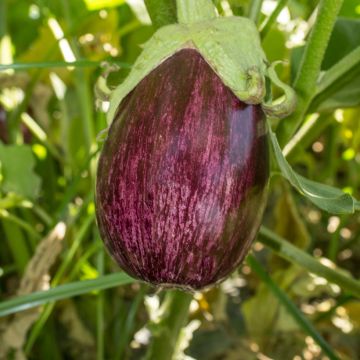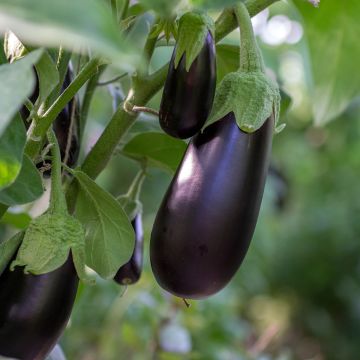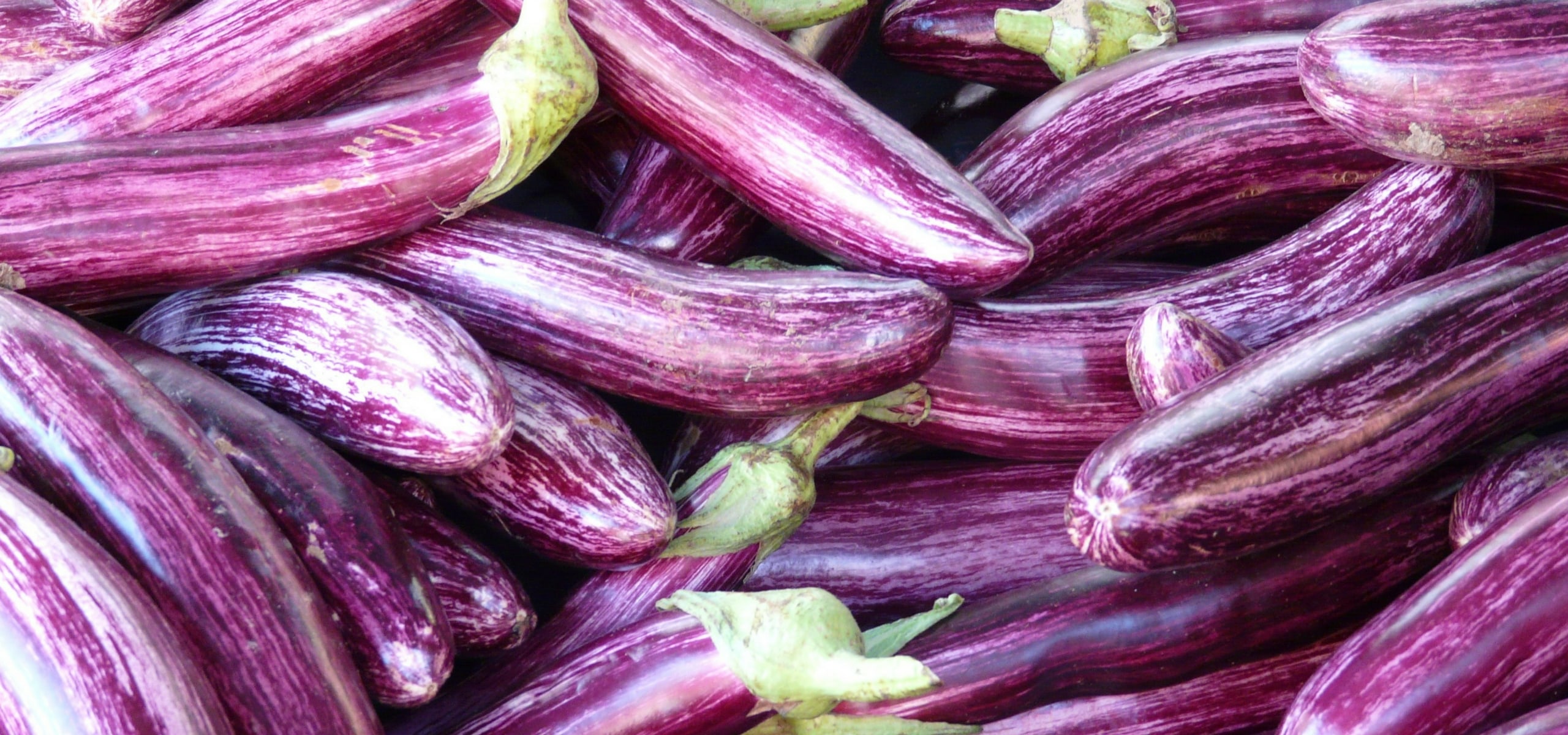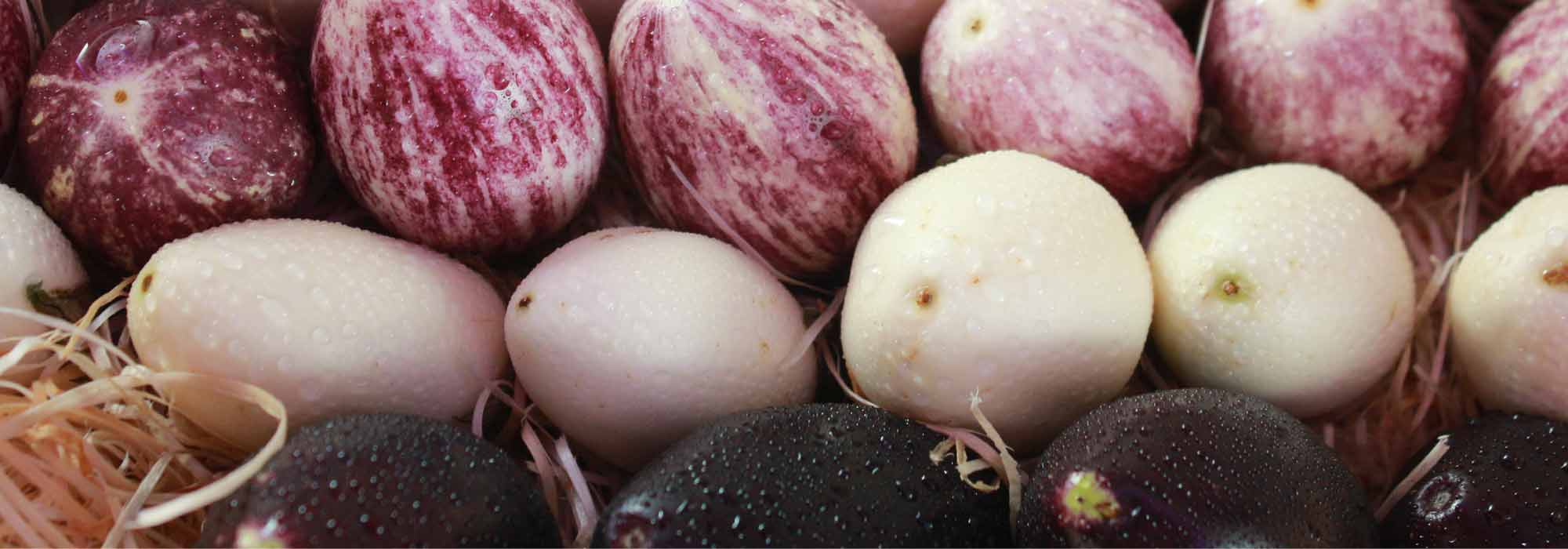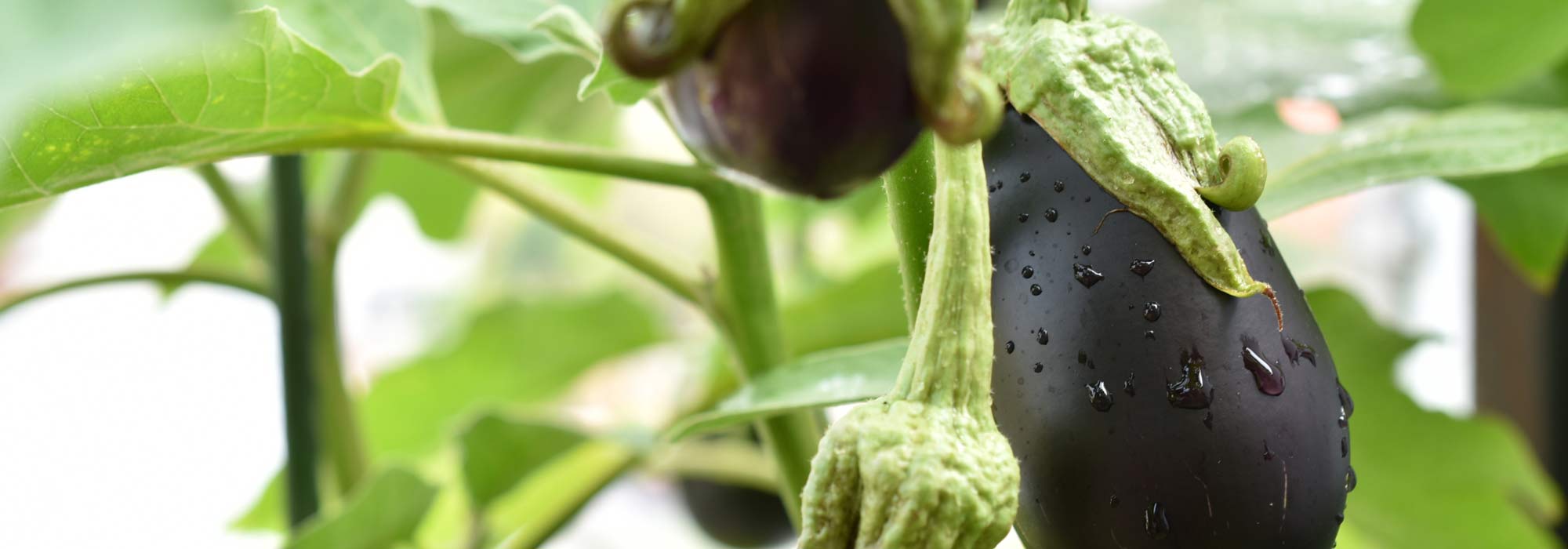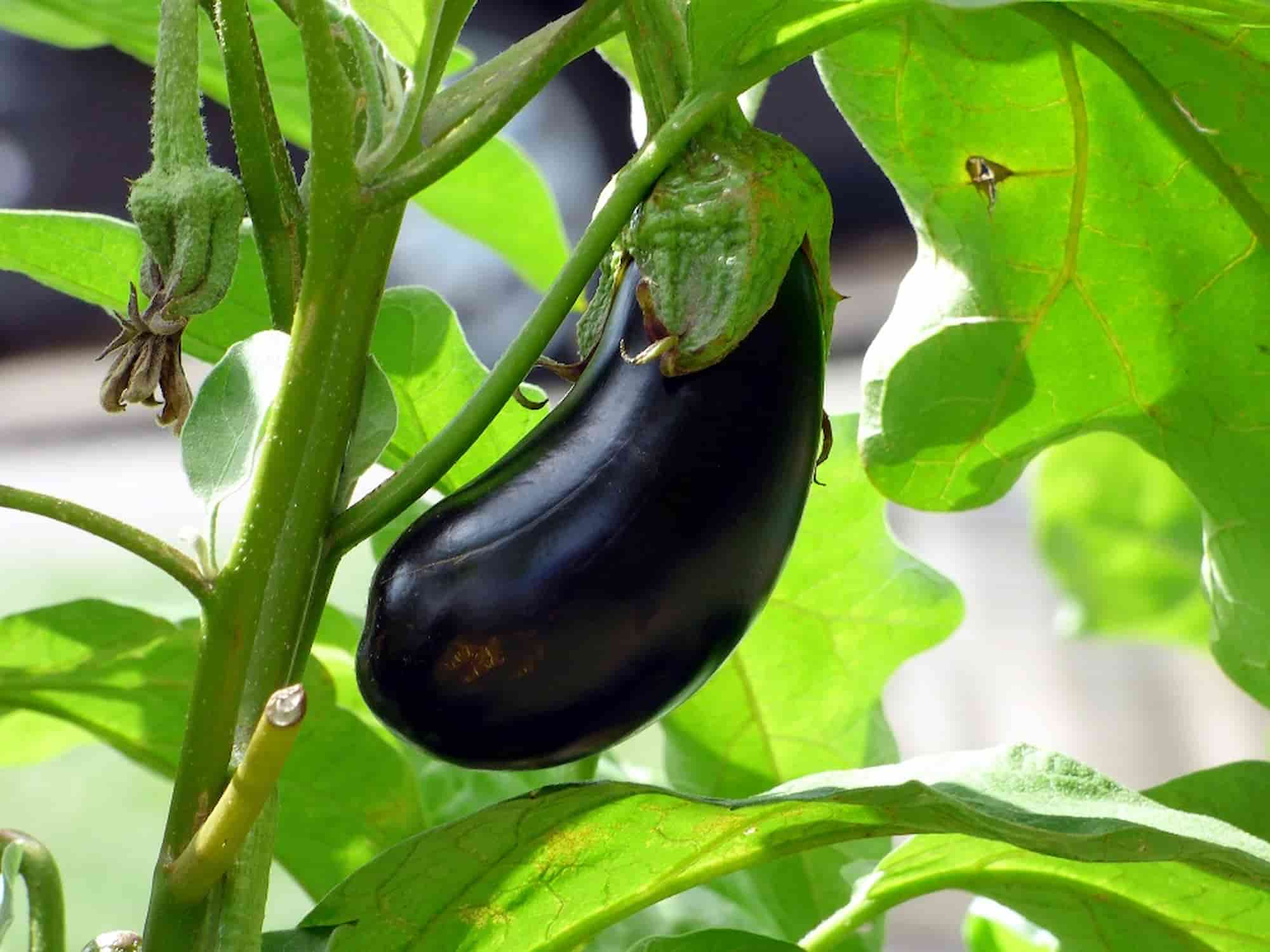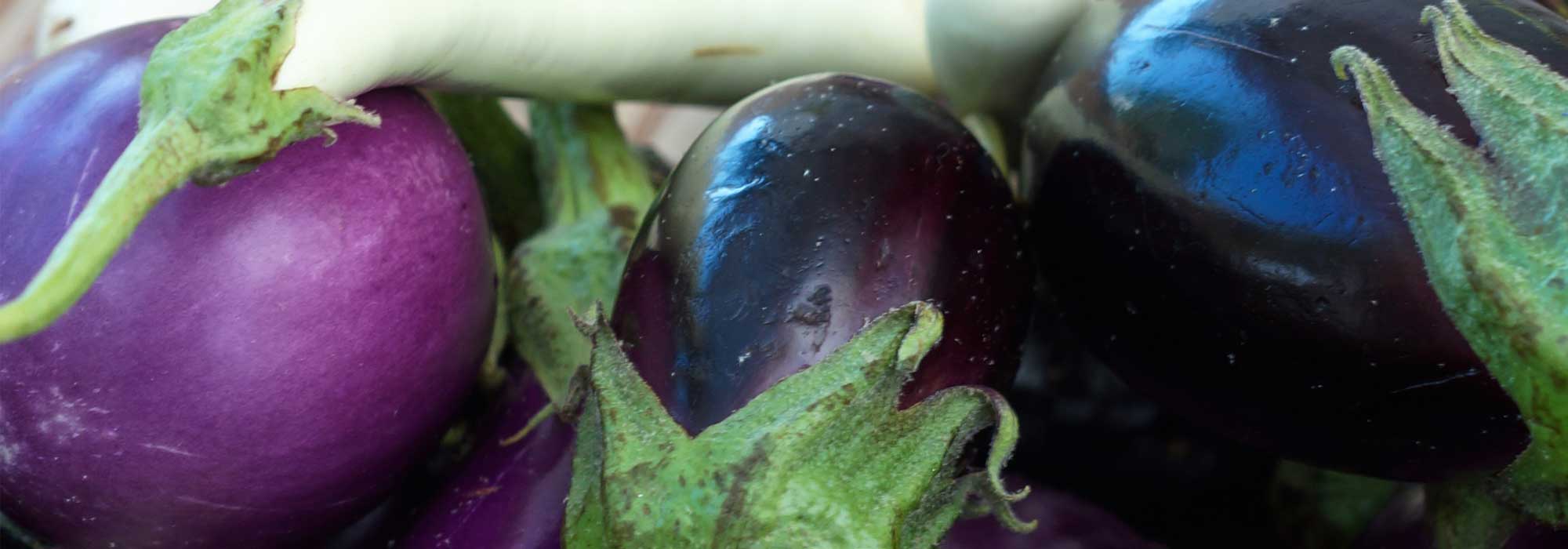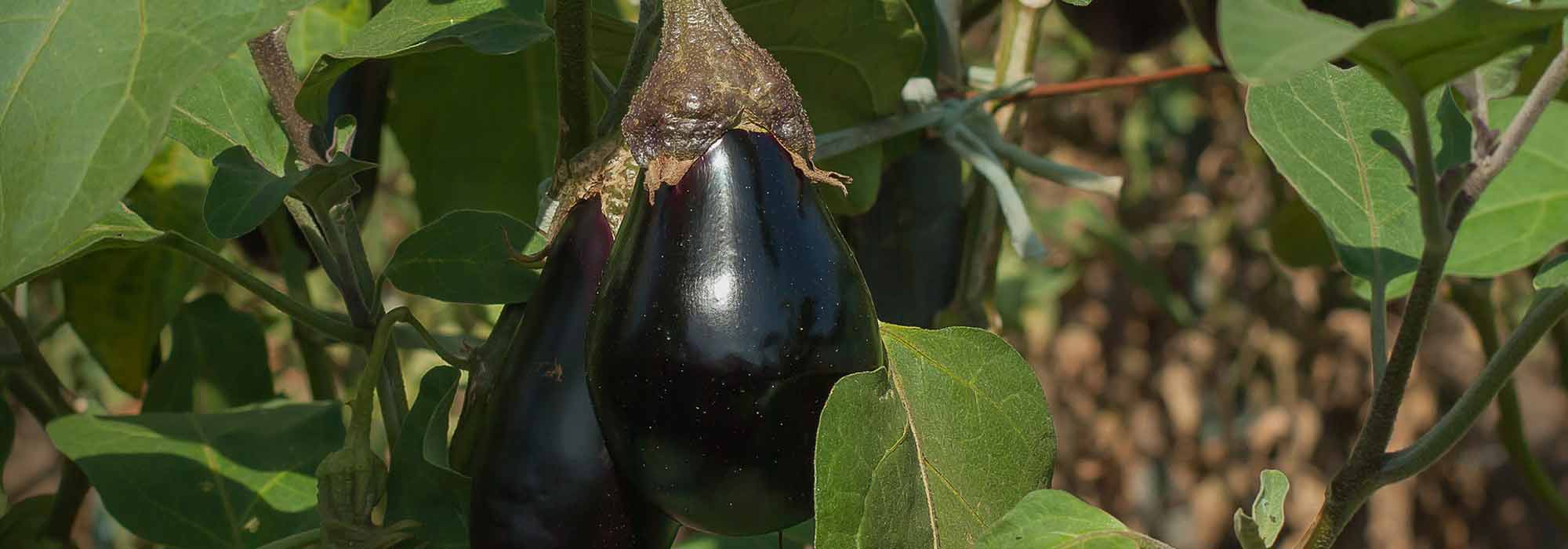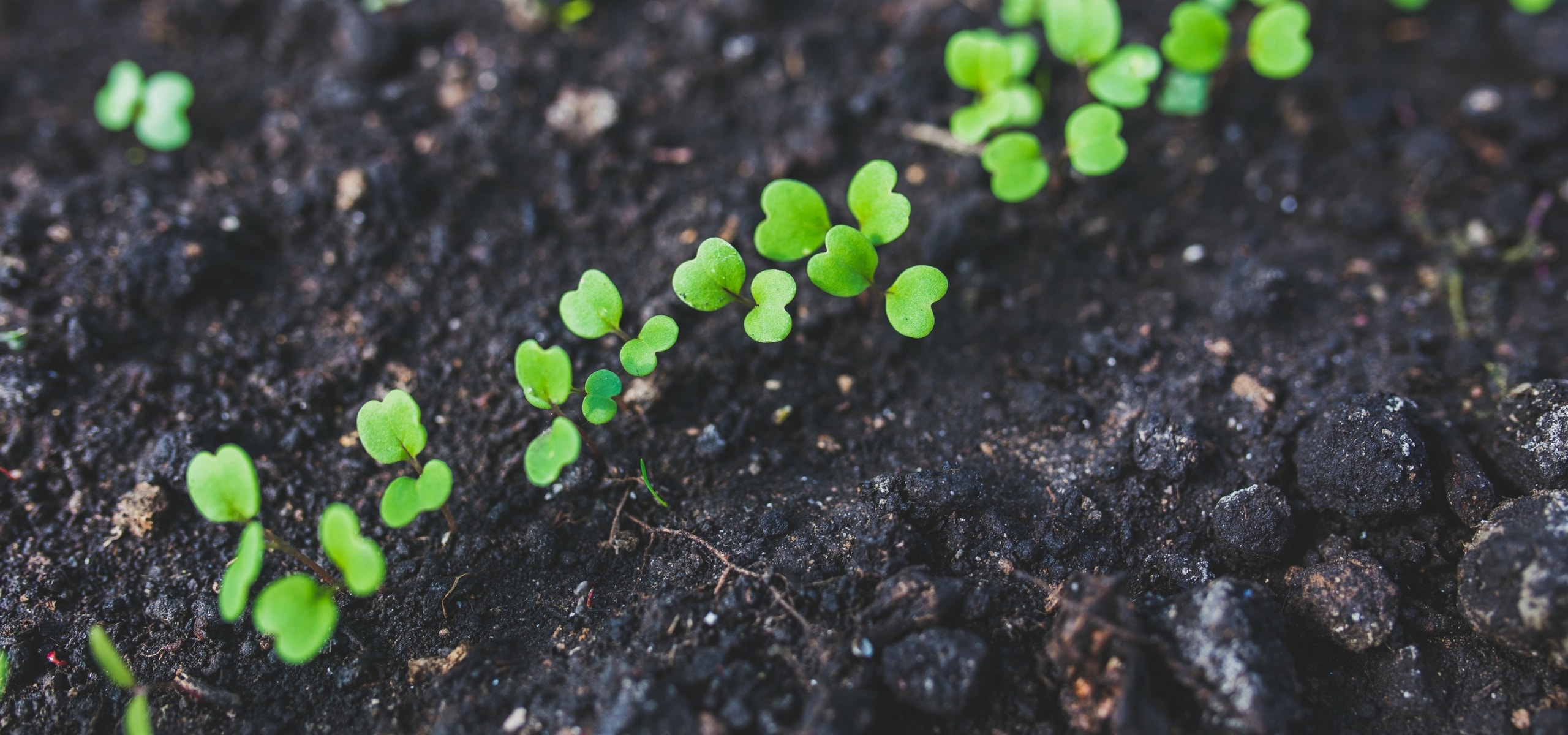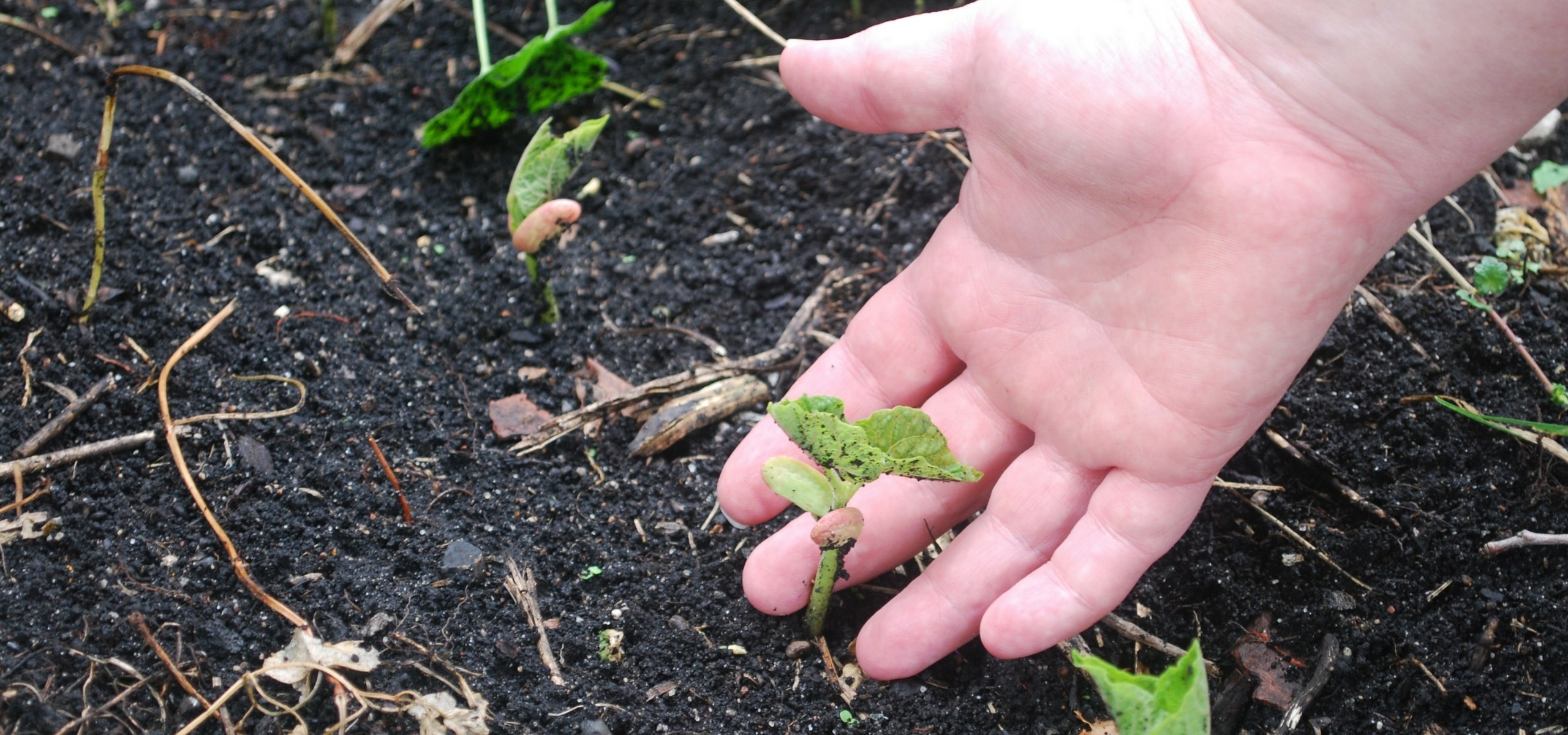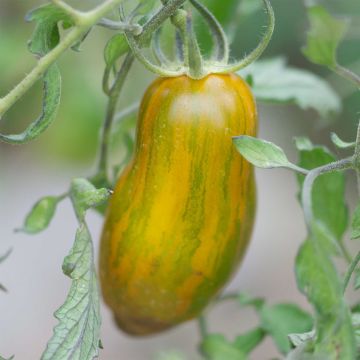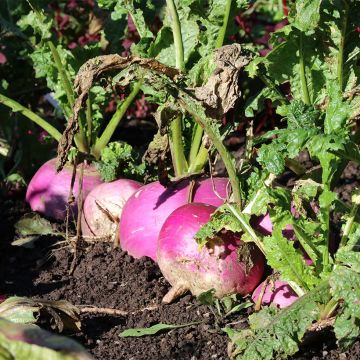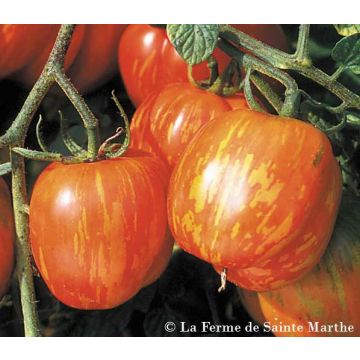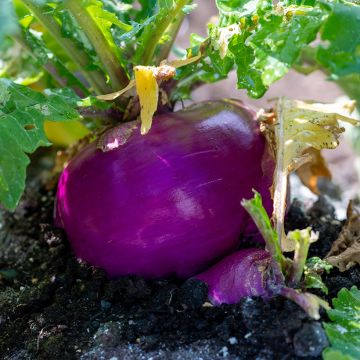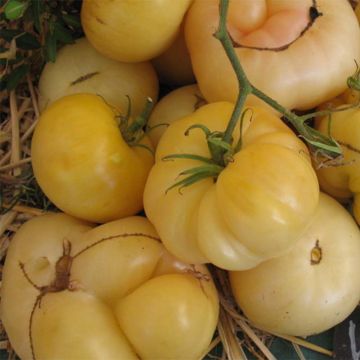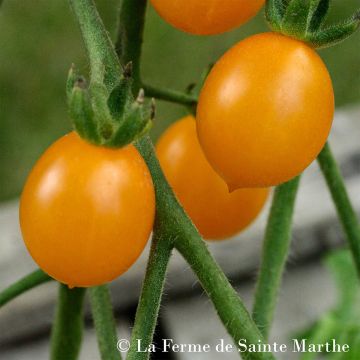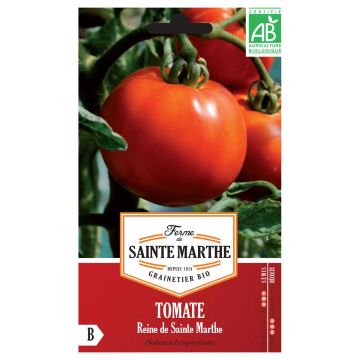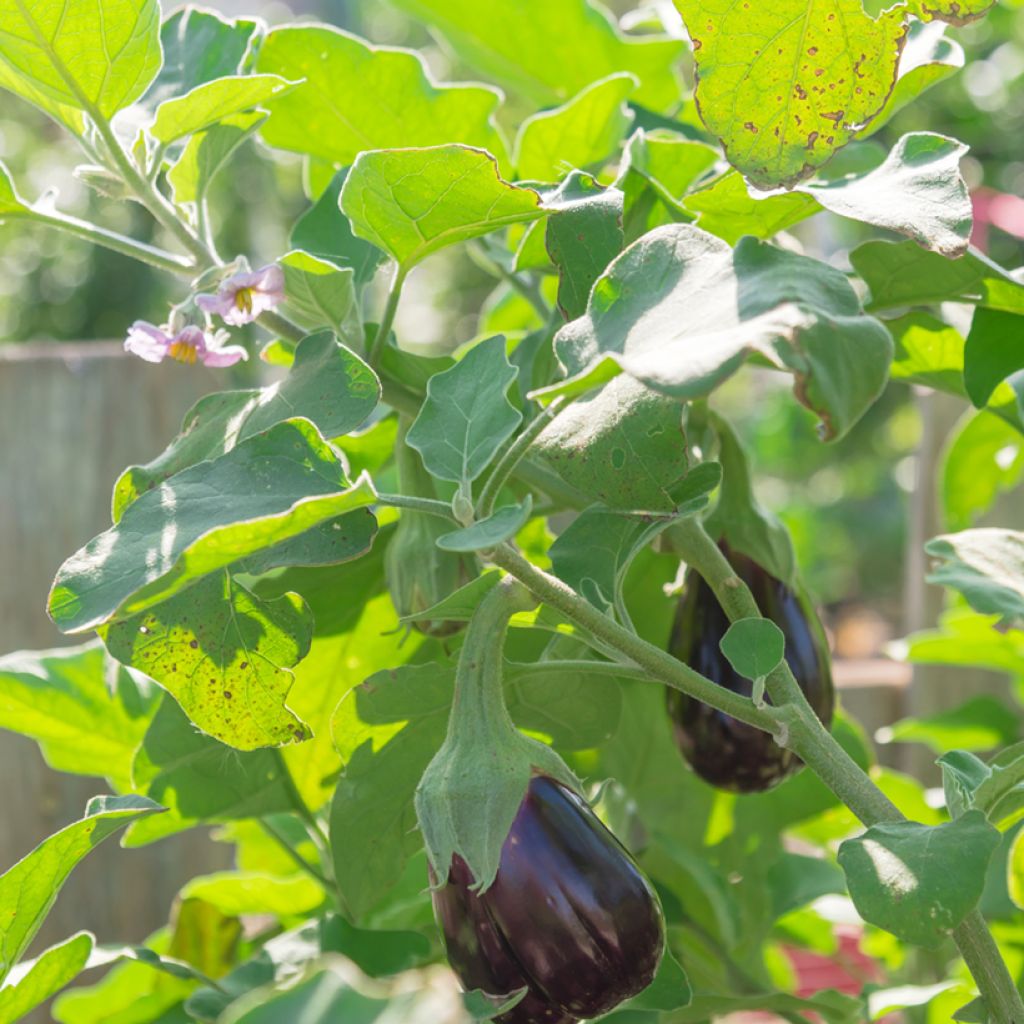

Aubergine Black Beauty organic seeds
Aubergine Black Beauty organic seeds
Solanum melongena Black Beauty
Aubergine, Eggplant
Special offer!
Receive a €20 voucher for any order over €90 (excluding delivery costs, credit notes, and plastic-free options)!
1- Add your favorite plants to your cart.
2- Once you have reached €90, confirm your order (you can even choose the delivery date!).
3- As soon as your order is shipped, you will receive an email containing your voucher code, valid for 3 months (90 days).
Your voucher is unique and can only be used once, for any order with a minimum value of €20, excluding delivery costs.
Can be combined with other current offers, non-divisible and non-refundable.
Home or relay delivery (depending on size and destination)
Schedule delivery date,
and select date in basket
This plant carries a 6 months recovery warranty
More information
We guarantee the quality of our plants for a full growing cycle, and will replace at our expense any plant that fails to recover under normal climatic and planting conditions.
Description
The Aubergine 'Black Beauty', offered here as AB certified seeds, is an old variety of Aubergine that is best grown under cover. Its large, pear-shaped, shiny deep black fruits can reach up to 13 cm in length and store well after harvest. The average yield is 3 or 4 fruits per plant. Sow in warmth from February to May for harvesting from July to October
The aubergine, originating from India and China where it has been cultivated since ancient times, arrived in Europe in the 14th century via Spain. The 'Black Beauty' variety is an old variety, introduced in the United States in 1902. It is the result of a cross between the 'Noire de Pékin' and 'Violette longue hâtive' varieties. Appreciated for its earliness and the quality of its fruits, it has become a reference in vegetable gardens worldwide.
The 'Black Beauty' Aubergine is distinguished by its generous fruits, with melting flesh, perfect for various preparations: gratins, ratatouilles, stuffed aubergines or even steamed. Nutritionally, aubergine is full of benefits: calming and diuretic, it is rich in vitamins (A, B1, B2, B5, C, PP) as well as minerals like iron and calcium.
Harvest: from July to October, fruits are picked according to their maturity, when they are well developed and soft to the touch.
Storage: in the refrigerator, aubergines can be kept for a week in the vegetable drawer. When steamed, they can be frozen for 6 to 8 months.
Practical advice: regularly hoe to aerate the soil and lightly prune the branches to encourage fruit enlargement. Provide the aubergine with a very sunny exposure and rich soil to maximize its production.
Harvest
Plant habit
Foliage
Botanical data
Solanum
melongena
Black Beauty
Solanaceae
Aubergine, Eggplant
Cultivar or hybrid
Annual
Other Eggplant seeds
View all →Planting and care
Sowing
The 'Black Beauty' aubergine will require an addition of well-decomposed compost (3 kg/m²) in the late autumn or early spring before sowing. The seeds are sown in pots filled with fine potting soil, kept warm, indoors from February, in a bright location. Keep the substrate moist. To facilitate germination, which can sometimes be capricious, keep the seeds in the bottom of the refrigerator for a few days (4 to 5°C).
Maintenance
When the plants have 5 to 6 leaves, transplant them into pots of potting compost or directly into the ground, in a warm location in a frame or tunnel. Remove the side shoots and pinch the plant when it has formed 2 or 3 clusters of flowers, this helps to create branching. Remove the suckers that develop at the base, as they tend to unnecessarily exhaust the plant. Good mulching both helps to keep the soil moist and prevents weed growth.
Seedlings
Care
Intended location
Planting & care advice
This item has not been reviewed yet - be the first to leave a review about it.
Similar products
Haven't found what you were looking for?
Hardiness is the lowest winter temperature a plant can endure without suffering serious damage or even dying. However, hardiness is affected by location (a sheltered area, such as a patio), protection (winter cover) and soil type (hardiness is improved by well-drained soil).

Photo Sharing Terms & Conditions
In order to encourage gardeners to interact and share their experiences, Promesse de fleurs offers various media enabling content to be uploaded onto its Site - in particular via the ‘Photo sharing’ module.
The User agrees to refrain from:
- Posting any content that is illegal, prejudicial, insulting, racist, inciteful to hatred, revisionist, contrary to public decency, that infringes on privacy or on the privacy rights of third parties, in particular the publicity rights of persons and goods, intellectual property rights, or the right to privacy.
- Submitting content on behalf of a third party;
- Impersonate the identity of a third party and/or publish any personal information about a third party;
In general, the User undertakes to refrain from any unethical behaviour.
All Content (in particular text, comments, files, images, photos, videos, creative works, etc.), which may be subject to property or intellectual property rights, image or other private rights, shall remain the property of the User, subject to the limited rights granted by the terms of the licence granted by Promesse de fleurs as stated below. Users are at liberty to publish or not to publish such Content on the Site, notably via the ‘Photo Sharing’ facility, and accept that this Content shall be made public and freely accessible, notably on the Internet.
Users further acknowledge, undertake to have ,and guarantee that they hold all necessary rights and permissions to publish such material on the Site, in particular with regard to the legislation in force pertaining to any privacy, property, intellectual property, image, or contractual rights, or rights of any other nature. By publishing such Content on the Site, Users acknowledge accepting full liability as publishers of the Content within the meaning of the law, and grant Promesse de fleurs, free of charge, an inclusive, worldwide licence for the said Content for the entire duration of its publication, including all reproduction, representation, up/downloading, displaying, performing, transmission, and storage rights.
Users also grant permission for their name to be linked to the Content and accept that this link may not always be made available.
By engaging in posting material, Users consent to their Content becoming automatically accessible on the Internet, in particular on other sites and/or blogs and/or web pages of the Promesse de fleurs site, including in particular social pages and the Promesse de fleurs catalogue.
Users may secure the removal of entrusted content free of charge by issuing a simple request via our contact form.
The flowering period indicated on our website applies to countries and regions located in USDA zone 8 (France, the United Kingdom, Ireland, the Netherlands, etc.)
It will vary according to where you live:
- In zones 9 to 10 (Italy, Spain, Greece, etc.), flowering will occur about 2 to 4 weeks earlier.
- In zones 6 to 7 (Germany, Poland, Slovenia, and lower mountainous regions), flowering will be delayed by 2 to 3 weeks.
- In zone 5 (Central Europe, Scandinavia), blooming will be delayed by 3 to 5 weeks.
In temperate climates, pruning of spring-flowering shrubs (forsythia, spireas, etc.) should be done just after flowering.
Pruning of summer-flowering shrubs (Indian Lilac, Perovskia, etc.) can be done in winter or spring.
In cold regions as well as with frost-sensitive plants, avoid pruning too early when severe frosts may still occur.
The planting period indicated on our website applies to countries and regions located in USDA zone 8 (France, United Kingdom, Ireland, Netherlands).
It will vary according to where you live:
- In Mediterranean zones (Marseille, Madrid, Milan, etc.), autumn and winter are the best planting periods.
- In continental zones (Strasbourg, Munich, Vienna, etc.), delay planting by 2 to 3 weeks in spring and bring it forward by 2 to 4 weeks in autumn.
- In mountainous regions (the Alps, Pyrenees, Carpathians, etc.), it is best to plant in late spring (May-June) or late summer (August-September).
The harvesting period indicated on our website applies to countries and regions in USDA zone 8 (France, England, Ireland, the Netherlands).
In colder areas (Scandinavia, Poland, Austria...) fruit and vegetable harvests are likely to be delayed by 3-4 weeks.
In warmer areas (Italy, Spain, Greece, etc.), harvesting will probably take place earlier, depending on weather conditions.
The sowing periods indicated on our website apply to countries and regions within USDA Zone 8 (France, UK, Ireland, Netherlands).
In colder areas (Scandinavia, Poland, Austria...), delay any outdoor sowing by 3-4 weeks, or sow under glass.
In warmer climes (Italy, Spain, Greece, etc.), bring outdoor sowing forward by a few weeks.






























